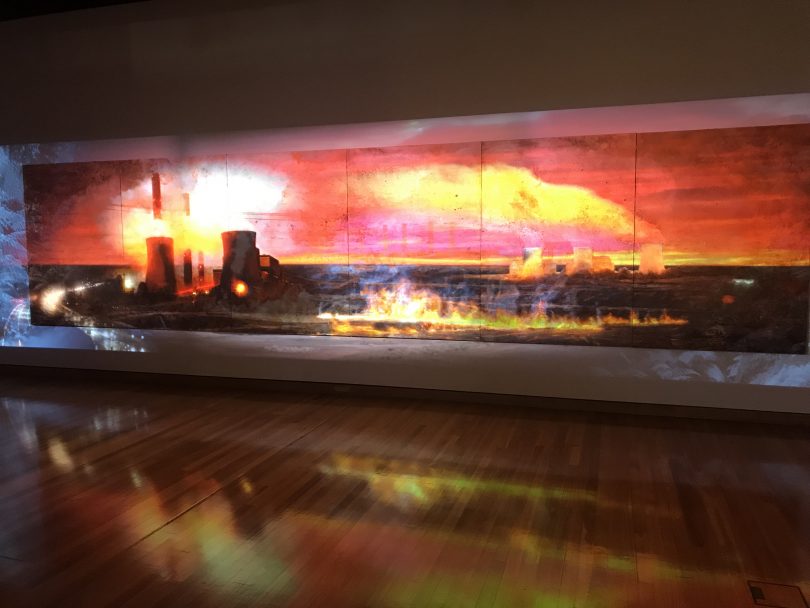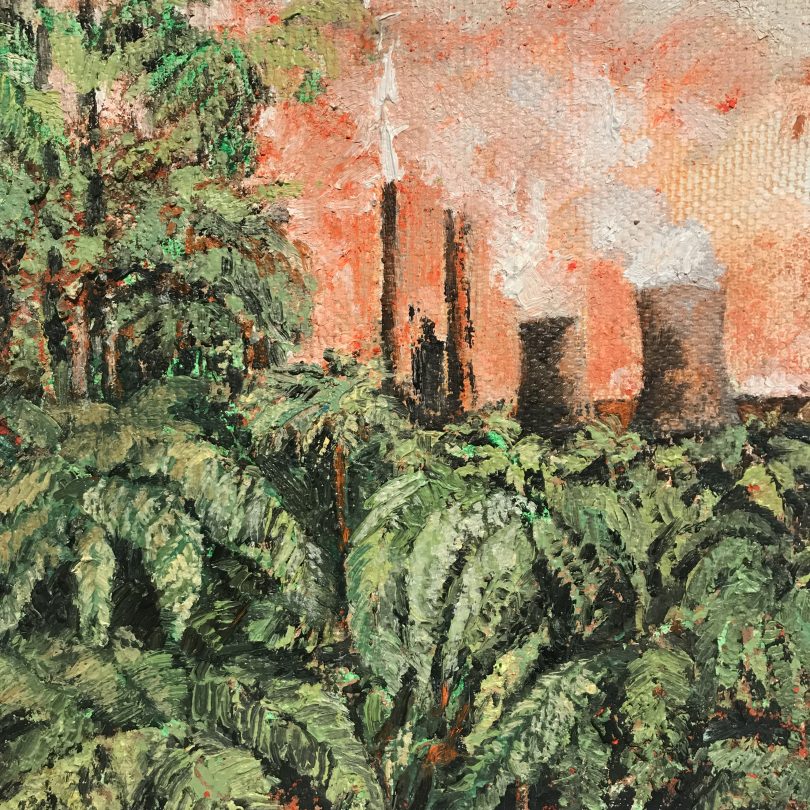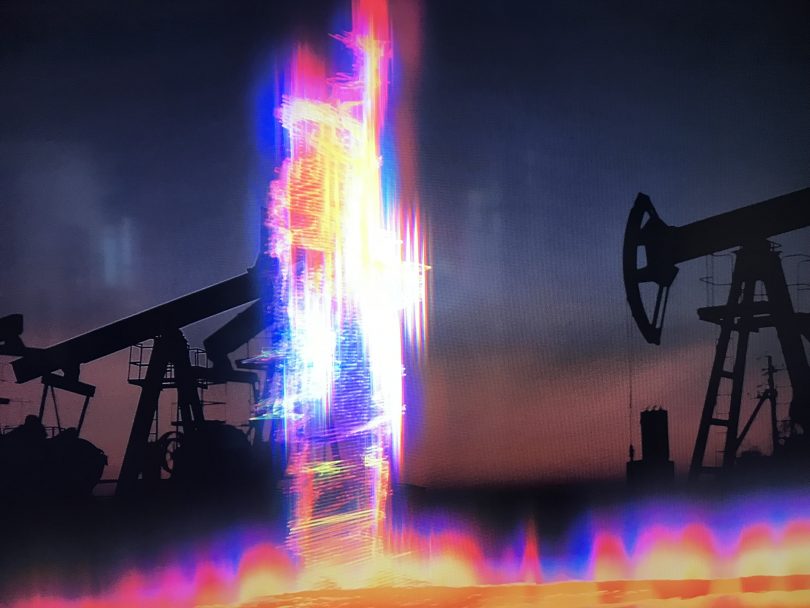
Hi-Vis Futures includes two major multi-format installation works from Mandy Martin and Alexander Boynes, with a soundtrack by Tristen Parr. Photos: Genevieve Jacobs.
It’s a dislocating experience to wander through Hi-Vis Futures, a joint Canberra Museum and Gallery exhibition between artists Mandy Martin and Alexander Boynes and musician Tristen Parr.
Archetypal Australian landscapes are overlaid with imagery of mines and smokestacks. A weeping cello picks its way through images of workers in hi-vis neon and, presciently, burning fires. It’s beautiful, politically charged and compelling all at the same time.
And, frankly, frightening.
“With a subject like climate change, getting people to focus on the big grim picture and do it in an engaging way is a really tough gig”, says Martin. “You are trying to sell a story that’s tough for people to come to terms with so you need as much emotion and information and as many entry points packed in there as you can.
“Music really helps with that. People linger and will watch the big works with music scores move through their cycle several times. Video helps to capture attention, too.
“Artworks tend to be skimmed and people will often only give a painting half a minute or so. The layered installation gets them to think and speculate for a longer time.”

Mandy Martin’s work covers environmental and political issues.
Martin is a renowned Australian landscape painter. You’ll often glimpse her major panel work above the Senate Estimates hearing as public servants are grilled by political operators. A farmer from Cowra, she has long engaged in collaborative projects that bring together artists, scientists, philosophers, writers and environmentalists to consider a situation from multiple angles.
But while many of her collaborators feel like family, these ones really are: Martin’s son Alexander Boynes is a rapidly emerging young artist who works with painting, photography, print media, light-based work and video installation.
The Hi-Vis Futures video images come from industrial and post-industrial communities like Morwell and Geelong, and Boynes often works with industrial materials including aluminium etched with ink and enamel.

Alexander Boynes uses light installations and video elements to evoke concerns over a changing climate.
Two epically scaled pieces overlay Martin’s paintings with video installations and musical scores from Parr, a classically trained acoustic and electric cellist specialising in contemporary music performance and sound design for theatre and dance, and Martin’s son-in-law.
“As climate change develops, I think we’ll all work together as families and from small communities”, Martin says. “We need to operate from our home base out.”
Smaller oils by Martin show lush greenery, backgrounded by industrial imagery. There’s a video interview with Martin and Boynes, tackling direct questions about the economic balance between farming and mining (Martin lives just over the horizon from the Cadia mine, the largest gold operation in the Southern Hemisphere).
She acknowledges that the mine employs 300 people although many of them are not local residents. But, she says, many local farming families have been displaced and their generational value to the community lost as a consequence.
“All art is political – everything we do is political,” Martin says. “We thought the last election would be about climate change but it wasn’t, so we now look to work in other ways. I’m really hoping that politicians wander over from the Legislative Assembly with their lanyards on.”
Hi-Vis Futures is showing at Canberra Museum and Gallery until 1 February 2020.
Slow Hope, an exhibition of works from the same project, is also showing at Beaver Galleries in Deakin until 15 December.












